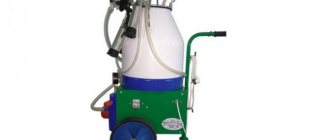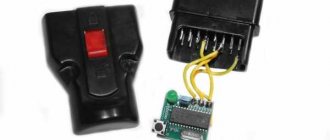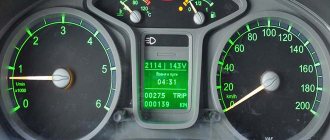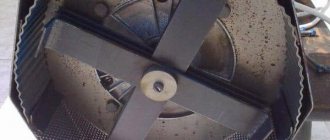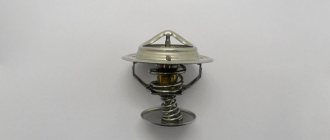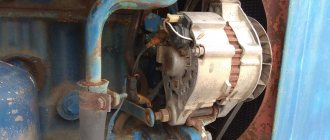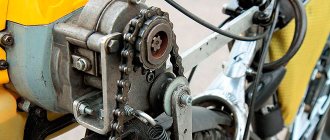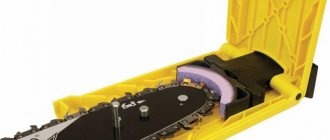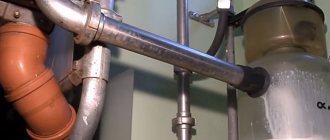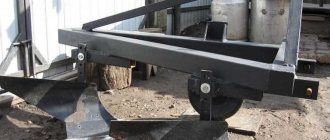Dairy livestock farming, although reduced in volume, remains popular among the rural population. Statistics say that 80% of dairy products come from individual farms and small farms. The most time-consuming operation when keeping cows is milking.
Milking cows on a farm
Previously, the only option in the private sector was manual labor. Milking machines were not available and were not suitable for home use. Now the situation has changed, the industry produces individual installations that are plugged into an outlet. AID-2 is used for milking cows, goats, sheep in a household or on a small farm.
Milking machine AID-2: operating principle
The operation of the installation is based on the generation of vibrations that provoke movements of the animal's nipples, simulating the sucking of milk by a calf (similar movements are caused by a milkmaid when milking into a glass).
During this process, milk is released from the cow's udder and flows through a hose into a can. The machine for milking cows has temperature restrictions: you can use it when the outside temperature is above +5 degrees Celsius.
According to reviews, working with AID-2 has a number of advantages:
- Thick rubber pads ensure the health and integrity of the udder. When used according to the instructions, the occurrence of an inflammatory process is excluded.
- The equipment is lightweight and equipped with wheels for movement.
- Availability of the option of parallel milking of two animals.
The imperfections of the installation include insufficient ventilation of the channels through which the milk flows and significant air consumption when the pump is operating.
Description of the device "Farmer" AD
The operating principle of the equipment is vacuum sampling of milk from cows. The installation is started by an electric motor, running on 220 V. Belt transmission. Dry type vacuum pump: NVI12. The motor and pump are located on the wheel base. They are covered with a steel cover, which is powder coated. The equipment is reliably protected from dirt and dust. The base is mobile, has 2 large wheels. For the hanging kit, handles are provided on the base.
- To compensate for vacuum and air pressure, a receiver is included in the kit.
- Vacuum pressure is adjusted using a vacuum gauge. Working pressure 48 kPa.
- The air hoses are black and made of rubber.
- The milk line consists of transparent plastic tubes.
- The milking cups are made of aluminum. This makes the design easier.
- The glasses have silicone linings.
- Vacuum pulsation is carried out by the operation of a pulsator. It produces 61 pulses per minute. The milking mode is close to the calf feeding mode.
- Milking speed of 10 cows in 1 hour.
- Milking bucket – 20 l.
- Dimensions of the device: 845*450*650.
- Weight – 25 kg.
The equipment is supplied in disassembled condition. The technical passport describes the assembly stages, drawings and drawings. Preventive measures for the care of the device are also indicated here, which should not be neglected. Before milking begins, the engine is allowed to idle. This is done in order to identify faults in the system and eliminate them. A list of faults and methods for eliminating them are indicated in the equipment passport.
The operating mode is push-pull. There is no rest phase during milking. The cuff in the cup compresses the nipple when air enters the cup. Decompresses the nipple while pumping air into the atmosphere. The milk passes through the tubes into the can: a vacuum is created in the container.
Assembling the AID-2 apparatus: step-by-step instructions
Milking equipment for cows is assembled as follows:
- The milk pipe is connected to a rubber nipple seal.
- A blotch with a fixed tube is placed in a glass and the tube is brought down through a hole in the bottom.
- A pulsator is placed on the can and connected to the collector using one of the three long pipes included in the kit.
- Fix the other two pipes on the can lid. One needs to be connected to the vacuum cylinder, the other to the manifold.
- A device for measuring the depth of vacuum is installed on the cylinder.
- Fill the car with oil. Now you can begin the milking process. If you plan to milk two cows, you can put numbers on the glasses.
Be sure to read:
How to determine if a cow is pregnant yourself using folk remedies: rectal examination, etc.
Advantages and disadvantages
Like any other technology, this milking machine has both its advantages and disadvantages.
Let's start with the positive aspects of AID-2:
- dry operation of the vacuum pump, which allows not to use lubricants;
- easy transportability, excellent mobility of this milking unit;
- a delicate milking process that does not injure the animal’s nipples;
- excellent quality of work in any conditions, regardless of climate.
Thanks to the combination of such positive aspects, AID-2 can be called a truly popular device with an excellent reputation.
AID-2
However, during operation it is possible to identify certain malfunctions and shortcomings, for example:
- It is better not to use it in animal habitats, as the unit consumes a large amount of oxygen, causing stuffiness;
- the channels for moving milk are poorly ventilated, which can lead to clogging.
As you can see, the shortcomings are not so critical, but they are still present.
This video shows the advantages of this device.
Assembling a milking machine for cows with your own hands: types, step-by-step instructions
If you cannot purchase equipment from a manufacturing company, you can make a home milking machine.
The following types of assembly are practiced:
- Design using a compressor that is adapted to a pump.
- Using a vacuum cleaner as a pump - in this case, an electric valve is installed to create pulse pressure in order to minimize trauma to the nipples.
In general, a milking machine for cows at home includes the following components:
- Suspension mechanism in contact with nipples. It is important to choose high-quality rubber elements - then the engine will need a minimum of power for suction.
- Can and hoses.
- Collector and pulsator - they can be purchased separately or already connected into a unit.
- Vacuum pump.
The assembly is done like this:
- The motor and vacuum pump are attached to the frame, and the pulleys are connected with a strap.
- Connect the hoses through which the milk goes into the can, to the pump and to the collector unit.
- A valve is placed into the can through a hole in the lid to control the pressure.
Peculiarities
Among the variety of milking machines, the AID brand has earned recognition from rural residents due to the reliability and quality of the work performed. The installation is simple in design. Even a person who has never dealt with mechanical milking can easily assemble and connect the device after studying the manual.
The installation is designed to serve a group of animals. This is possible due to high productivity: up to 10 cows are milked in 1 hour. The AID 2 milking machine takes 5 minutes to milk one animal and is capable of working with two together. Ease of operation reduces to a minimum the time spent moving from one individual to another. Minor modification allows you to milk goats and sheep.
The unit meets modern requirements regarding milk quality. The sealed design of the vacuum pump ensures that the cow's udder products are supplied to a closed reservoir. The slightest contact not only with any pollutants, but even with air is excluded.
Milk processors do not make any claims regarding the compliance of milk with sanitary requirements if the donors use the AID 2 milking machine.
The installation is easy to maintain and operate. After each milking, the machines need to be washed. Thanks to a well-thought-out design solution, this does not take much time, is easy and affordable. The kit includes cleaning brushes that can clean even the longest hoses.
What does the AID-2 milking machine look like?
The device is equipped with original pump protection against possible ingress of milk. This happens when the milkmaid did not take care of the container, it overflowed or tipped over. Suction of milk and air begins, liquid enters the pump, and it jams. The engine stops and burns out if the device does not provide protection against such cases.
Advantages and disadvantages
The device is designed for milking one cow, or you can connect the equipment to two animals at the same time. With short breaks (3-4 minutes), you can milk 8-20 cows in succession. Advantages of the technique:
- convenient installation and simple maintenance;
- light weight of the device;
- The equipment operates at high and low temperatures.
Dimensions of anti-kicking for cows and how to make them yourself, training for milkingRead
The device ensures complete milking of cows. In this case, the milk immediately flows into a sealed chamber, and foreign particles do not contaminate it. Hot water is sufficient for proper cleaning of the device.
Expert opinion
Zarechny Maxim Valerievich
Agronomist with 12 years of experience. Our best country expert.
Ask a Question
A significant advantage of the device is that when the can overturns or overflows, a special device stops the flow of milk into the pump cavity.
The service life of the vacuum installation is increased thanks to this device. The main disadvantages of the milking machine: unfavorable cyclic action of the teat rubber, high cost of the device.
Description of the device "Doyushka" 1PR
The equipment was created for small livestock farming. The device is capable of collecting milk from 10 heads of cattle in 1 hour. Engineers carefully thought through the design of Doyushka. There are no unnecessary or complex details in it. Everything is simple and logical. The price of the device is affordable.
The equipment weighs 52 kg. For movement, a frame made of nickel-plated steel is equipped, which has wheels and a handle. The wheels have a low axle, which reduces the risk of the unit tipping over. When stored, glasses with adjacent tubes are hung on the handle of the frame. The installation is compact: height – 78 cm, width – 39 cm, length 1 m. The device operates from a 220 V network, power – 550 W. The equipment requires access to all structural elements.
The engine is mounted on the frame on top of the wheels: completely open. This saves it from overheating and makes it possible to easily inspect the motor. Asynchronous type motor. The power cord comes from it. There is a power button on the top of the panel. Belt transmission. The pulley is located on the frame: it drives the connecting rod.
Thanks to the special pump stroke, there is no need for additional equipment. The pump operates at a frequency of 64 pulsations per minute. For a cow, this option for collecting milk is comfortable. The milk is expressed from the udder without any residue. No additional manual milking required.
The pump has a collapsible design. It consists of a main body, which is closed at the top and bottom with lids. Fastening occurs through threaded rods. The fitting and valve are fixed on the upper surface. A vacuum hose is connected to the fitting. The bottom surface has holes for the piston and connecting rod. The piston has a leather cuff. Thanks to it, the chamber is sealed. When worn out it is easy to change. Lubricate the piston with oil once a week.
A can is provided for collecting milk. It is made of stainless steel. Its volume is 22.6 liters. The can is placed on a platform that has a round shape. The container is protected from falling by sides. It is rigidly fixed to the frame.
The milking machine is represented by 4 glasses. They are made of stainless steel. To control the amount of milk in the cylinders of the glasses there are transparent plastic inserts. The cuff inserts and hoses are made of black rubber. The equipment is light, milking a cow will not cause complications.
Glasses and milk containers must be washed every time after milking. To care for equipment, brushes and brushes are used. Accessories are included with the milking machine. The cost of equipment is from 18 thousand rubles.
Most common faults
Any equipment periodically breaks down or starts to work poorly. Some malfunctions of the milking machine can be eliminated yourself:
- Low pressure in the hoses can be caused by a violation of the integrity of the tubes or rubber elements. The malfunction can only be eliminated by replacing damaged parts;
- Problems with the operation of the pulsator often occur. As a rule, problems arise due to contamination. To solve the problem, it is recommended to disassemble the device and thoroughly clean and rinse the pulsator components. The parts must be dry before assembly;
- a problem in the form of air suction occurs when rubber components wear out. To eliminate the defect, the tubes are checked and the rubber elements are updated.
If the engine does not run, the reasons may be a lack of voltage or a problem with the vacuum pump. The issue with the vacuum pump can only be resolved by repair.
The Farmer milking machine is in demand both in small farms and in large livestock complexes. The device is not difficult to use; it takes an average of 6 minutes to milk one cow. Prevention consists of cleaning the device and checking the oil level in the system.
Advantages of milking with a machine
Farmers who use manual milking are faced with contamination and high levels of microorganisms in the milk. This is due to the unsterility of the process and the possibility of dust from the cow’s belly or bedding particles getting into the bucket. With machine milking, the product is cleaner than with manual milking. According to the results of laboratory tests, the contamination in milk is reduced, it is stored longer and does not sour.
Hardware milking protects the health of farm employees and the money of its owner. With the manual method, after a few years, workers begin to suffer from pain in their hands, and deep cracks appear on their palms. The milkmaid copes worse with her duties, often takes time off to go to the clinic and brings a loss to the farmer.
Milking using the machine method has a positive effect on cows: the rate of milk production increases and the udder is completely emptied faster. Machine milking imitates the suckling of a calf, so the cow does not experience discomfort. The soft pulsation does not injure the udder and does not leave scratches or wounds. Veterinarians have repeatedly noted a decrease in the incidence of mastitis in livestock when the farm switched to machine milking.
